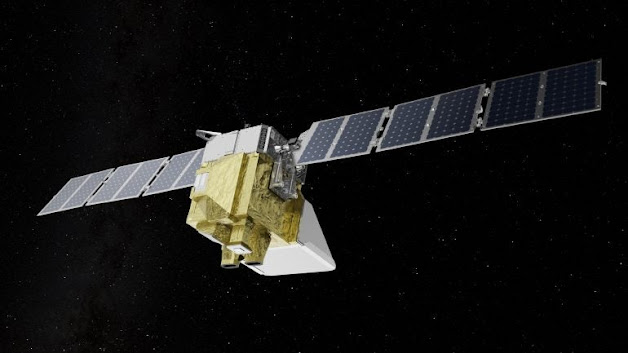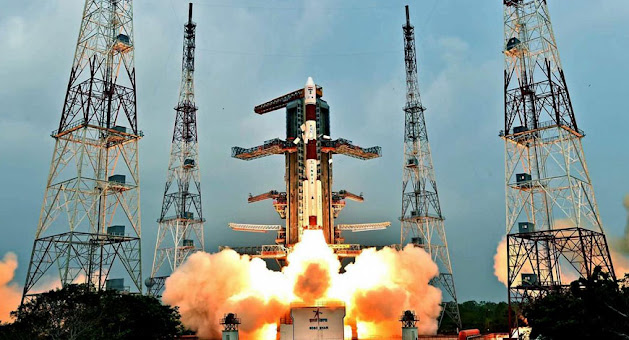Meet MethaneSAT, a satellite which will ‘name and shame’ methane emitters
March 5, 2024
Written by Alind Chauhan, The Indian Express, New Delhi
Methane is the second largest contributor to global
warming, after carbon dioxide. MethaneSAT will identify how much methane is
coming from where, who’s responsible, and are those emissions going up or down
over time.
MethanSAT model. (Source: MethaneSAT)
MethaneSAT — a
satellite which will track and measure methane emissions at a global scale —
was launched aboard a SpaceX Falcon9 rocket from California on Monday (March
4).
While the
washing-machine-sized satellite is not the first spacecraft to identify and
quantify methane emissions, it will provide more details and have a much wider
field of view than any of its predecessors.
Here is all you
need to know about MethaneSAT.
But first, why do we need to track and measure methane
emissions?
Methane is an
invisible but strong greenhouse gas, and the second largest contributor to
global warming after carbon dioxide, responsible for 30 per cent of global heating
since the Industrial Revolution. According to the United Nations Environment
Programme, over a period of 20 years, methane is 80 times more potent at
warming than carbon dioxide.
https://www.youtube.com/watch?v=IfwdDEybJWg
The gas also
contributes to the formation of ground-level ozone — a colourless and highly
irritating gas that forms just above the Earth’s surface. According to a 2022
report, exposure to ground-level ozone could be contributing to one million
premature deaths every year.
Therefore, it
is crucial to cut methane emissions. And the main culprit: fossil fuel
operations, which account for about 40 per cent of all human-caused methane
emissions. The objective of MethaneSAT is to help achieve this goal.
What is MethaneSAT?
The entity
behind MethaneSAT is the Environmental Defense Fund (EDF) — a US-based
nonprofit environmental advocacy group. To develop the satellite, EDF partnered
with Harvard University, the Smithsonian Astrophysical Observatory, and the New
Zealand Space Agency.
Essentially,
MethaneSAT will orbit the Earth 15 times a day, monitoring the oil and gas
sector. It will create a large amount of data, which will tell “how much
methane is coming from where, who’s responsible, and are those emissions going
up or down over time”, according to a statement by EDF.
The data
collected by MethaneSAT will be made public for free in near real-time. This
will allow stakeholders and regulators to take action to reduce methane
emissions.
What are the features of MethaneSAT?
Historically,
tracking the source of methane emissions and measuring them has been quite
challenging.
While some satellites can provide high-resolution data, they can only scan
specific, pre-targeted sites. Others can examine larger areas and detect large
emitting events, but cannot scan “smaller sources that account for the majority
of emissions in many, if not most, regions,” the EDF statement added.
Due to this
discrepancy, according to an International Energy Agency (IEA) report, global
methane emissions are about 70 per cent higher than levels reported by national
governments.
From our Climate Change series |
MethaneSAT is
expected to fix the issue. Equipped with a high-resolution infrared sensor and
a spectrometer, the satellite will fill critical data gaps. It can track
differences in methane concentrations as small as three parts per billion in
the atmosphere, which enables it to pick up smaller emissions sources than the
previous satellites. MethaneSAT also has a wide-camera view — of about 200 km
by 200 km — allowing it to identify larger emitters so-called “super emitters”.
A sample of MethaneSAT’s data. (Source: Google Earth
Engine)
The collected
data will be analysed using cloud-computing and AI technology developed
by Google — the company is a mission
partner — and the data will be made public through Google’s Earth Engine
platform, a report by The New York Times stated.
Why is it significant?
The launch of
MethaneSAT has come at a moment when the world is implementing more stringent
methane management policies. For instance, more than 150 countries signed the Global Methane Pledge in 2021, to cut
their collective methane emissions by at least 30 per cent from 2020 levels by
2030. At last year’s COP, more than 50 companies committed to virtually
eliminating methane emissions and routine flaring. MethaneSAT will help them
meet these targets.
The satellite
will also usher in a new era of transparency. Its publicly available data,
which can be accessed by anyone in the world, will keep track of methane
commitments made by governments and corporations.
However, it does not necessarily mean
that the data will compel polluters to curb their emissions. Drew Shindell, an
earth-science professor at Duke University who wasn’t involved with MethaneSAT,
told The NYT: “There’s no guarantee that this information
leads to a change in behaviour.”




Comments
Post a Comment